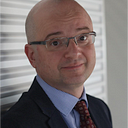Member-only story
Being Alive
Several Nobel prizes in Physiology or Medicine were awarded for helping us understand what makes our cells alive and functioning as they should.
The atoms from which we are built were created by the action of stars billions of years in the past. Many of those atoms have now temporarily organized to take on human form. After our death, they will disorganize again and return to nature. This realization leaves us with the question — what makes the difference between living and non-living at all? Clearly, the same atoms can be incorporated into living and non-living matter at different times.
From the point of view of chemistry and biochemistry, it is possible to think of us as an incredibly complicated system. It is constructed from the so-called structural proteins, enzymes, coenzymes, molecules built from nitrogenous bases with stored information such as DNA, then phospholipids, sphingolipids, sugar structures, signalling molecules, and many other molecules which are prone to electrochemical reactions with each other. This system permanently uses oxygen, water and food to sustain itself. So, thinking about life through the prism of physics or chemistry is immensely complicated. This is probably why we mostly think about our organism through the prism of biology. We see it as a cluster of trillions of our own cells, and then also further trillions of bacterial cells which also inhabit the human body.
Before scientists could turn to the analysis of the obstacles that stand in the way of a significant extension of human life expectancy, it…
